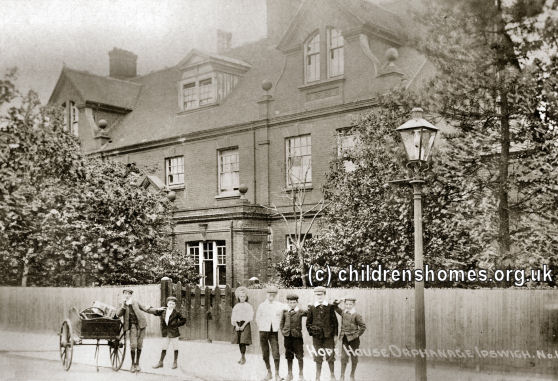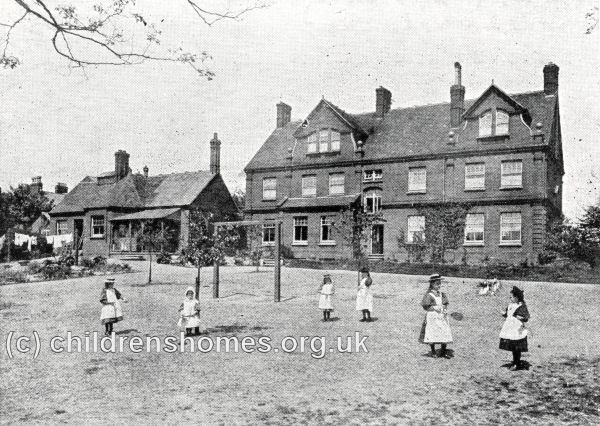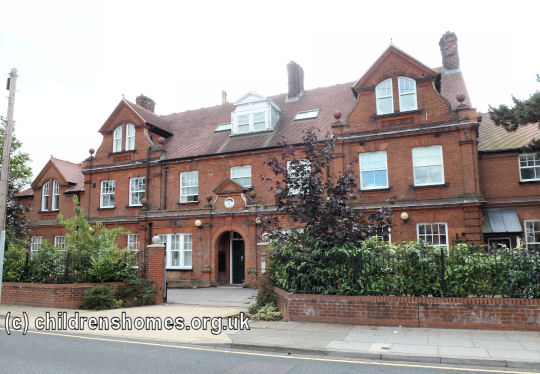Hope House Orphanage, Ipswich, Suffolk
The institution that became the Hope House Orphanage at Ipswich was founded in 1873 by local businessman, politician and philanthropist Edward Grimwade. It was run in collaboration with his daughter Miss Harriet Isham Grimwade who was also active in local charitable and social concerns including the Tanners Lane Mission, the Ipswich Women's Suffrage Society and the local School Board. Initially, the establishment took in women who were living a 'wicked an immoral' life. After a year, however, it was decided that it would be more fruitful to make provision for children who had been left motherless. The new home, sometimes also referred to as the East Suffolk Girls' Home, was opened on January 1st, 1875, at 14 Church Street, Ipswich, near St Clement's Church.
In 1881, the establishment had twenty girls in residence aged from 6 to 13 years. Sarah Leathers was matron of the establishment and Elizabeth Heyward was the schoolmistress.
The home gained local support and money was raised to erect purpose-built premises for the institution. Land for the building was originally found on Woodbridge Road but a site was eventually settled upon at 158 Foxhall Road, Ipswich. Four foundation stones for the new building were laid on 6th May, 1882, including ones by Edward Grimwade and Harriet Grimwade. The new home, which could accommodate 40 girls, adopted the name Hope House Orphanage, and was opened in January 1883.

Hope House Orphanage foundation stone, Ipswich, 2014. © Peter Higginbotham
The new building, designed by William Eade, was in the Queen Anne style and constructed in red brick. The ground floor included the entrance at the centre, a reception room, matron's room, school-room, dining-room, kitchen, scullery and other minor rooms. On the first floor were two large dormitories, each 32ft. by 18ft. 6in., matron's and assistants' bedrooms. On the second floor was another large dormitory and a sick-room. Two staircases connected the floors from the top to the bottom of the building. Outside was a large playground, garden, and an enclosed kitchen yard.
Hope House later became a certified home, allowing it to receive girls boarded out by the Boards of Guardians who ran the poor relief and workhouse system. It could accommodate up to 40 girls, aged 3 to 10 years at their date of admission. In 1930, a weekly charge of 11 shillings was mad for girls placed by Guardians, while others paid according to their circumstances.

Hope House Orphanage, Ipswich, c.1910. © Peter Higginbotham

Hope House Orphanage, Ipswich, early 1900s. © Peter Higginbotham

Former Hope House Orphanage, Ipswich, 2014. © Peter Higginbotham
The home was extended at the left-hand side in 1907.

Former Hope House Orphanage, Ipswich, 2014. © Peter Higginbotham
The home is believed to have closed at the start of the Second World War and during the war the premises were used to house Land Army girls.
The property is now in private residential use.
Records
Note: many repositories impose a closure period of up to 100 years for records identifying individuals. Before travelling a long distance, always check that the records you want to consult will be available.
- None identfied at present — any information welcome.
Census
Bibliography
- Higginbotham, Peter Children's Homes: A History of Institutional Care for Britain s Young (2017, Pen & Sword)
Links
- None identified at present.
Except where indicated, this page () © Peter Higginbotham. Contents may not be reproduced without permission.


